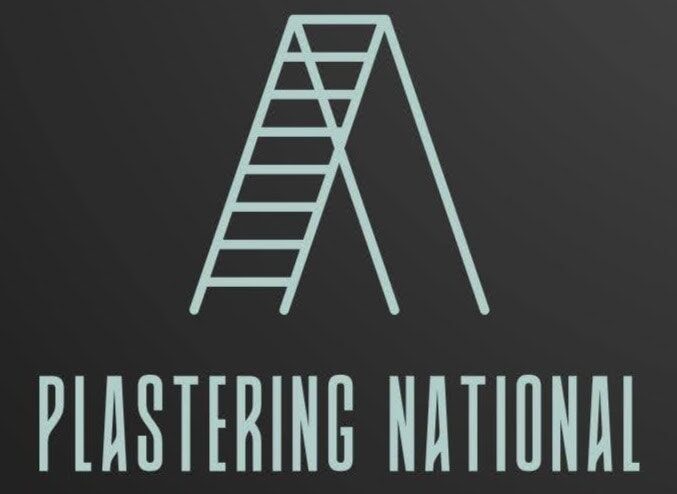Plaster has become popular as a bathroom wall finish, even though tiles have long been the traditional choice. Once used mainly for fixing cracks, plaster is now a common option to cover entire bathroom walls, including showers.
In this article, we will examine the benefits and drawbacks of plastering bathroom walls, the best types of plaster for this purpose, and some alternatives to consider.
Let’s get straight to the point.
Plastering bathroom walls is popular for its aesthetic appeal, durability, and cost-effectiveness. It offers a range of finishes and textures, from smooth Venetian plaster to rustic, textured styles, and can be a more affordable alternative to tiles.
Properly installed plaster is water-resistant and durable, making it suitable for humid environments. However, to prevent stains and mould growth, careful installation, regular maintenance, and protection against water damage is required.
Consulting professionals for installation and opting for moisture-resistant plaster is recommended to ensure a long-lasting and attractive finish.
Why Plaster Bathroom Walls?

Homeowners are increasingly choosing plaster for their bathroom walls due to its range of benefits, including its ability to suit various needs and styles:
1. Aesthetic Appeal
- Creates a sleek, elegant look suitable for modern and classic bathroom designs.
- It offers a variety of textures—like smooth, polished, or rough finishes—that can be tailored to individual preferences.
- Allows for custom colours, making matching or contrasting the bathroom decor easy.
2. Water Resistance
- Moisture-resistant plaster prevents problems like peeling, bubbling, or mould growth.
- Provides a seamless surface that reduces the risk of water seeping into cracks.
3. Cost-Effectiveness
- Generally more affordable than tile or natural stone installations.
- Faster and simpler installation means reduced labour costs.
4. Hygiene
- A non-porous surface doesn’t collect moisture, helping to prevent mould and mildew growth.
- Easier to clean than textured surfaces like tiles or grout lines.
5. Environmental Benefits
- Made from natural materials with a lower environmental impact than other wall finishes.
- Requires less energy-intensive manufacturing processes.
- Easy to maintain with mild, non-toxic cleaning agents, supporting a healthier indoor environment.
- Choosing plaster for bathroom walls combines practicality with design flexibility, making it a versatile option for any home.
Pros Of Plastering Bathroom Walls
1. Aesthetic Appeal
One of the main reasons people choose plaster is its visual impact. Creating various textures—from smooth to rough—gives homeowners flexibility in design. Here are some popular plastering techniques:
- Venetian Plaster: This method involves applying multiple layers of plaster and then polishing the surface to a high shine. It can give the bathroom a luxurious, spa-like feel.
- Textured Plaster: Depending on the style, a textured finish can create a rustic, earthy vibe or a contemporary look.
- Coloured Plaster: Pigments can be mixed into plaster or applied as a colour wash on the surface. Whether you prefer soft pastels or bold colours, this allows for a personalised touch.
2. Durability
Plaster is a durable option for bathroom walls when installed and maintained properly. It stands up well to moisture and doesn’t bubble or peel like paint or wallpaper.
Plaster’s strength can also be enhanced by adding fibreglass mesh, making it even more cracking-resistant.
3. Cost-Effectiveness
Plastering can be a more affordable choice compared to tiles or natural stone. While the total cost depends on factors like bathroom size and the type of plaster used, it is generally quicker and less expensive to apply.
This can be a great option for renovating their bathrooms on a budget.
4. Customisation
Plaster’s versatility allows homeowners to add unique textures and colours to their bathroom walls. From polished surfaces to intricate patterns, plaster provides plenty of options to create a personalised look.
Techniques like stencilling or adding mosaics with tiles can further enhance the design.
Cons Of Plastering Bathroom Walls
Despite its many benefits, plaster also has some drawbacks that should be considered:
1. Installation Challenges
Plastering a bathroom wall is complex, especially in high-moisture areas. Careful preparation and knowledge are required to ensure a proper seal that prevents water damage.
Hiring a professional is often recommended to ensure the plaster is applied correctly.
2. Maintenance Requirements
Bathrooms with plastered walls need regular upkeep to prevent staining or mould growth. Regular cleaning with mild soap and water is essential to keep the plaster looking fresh.
Any damage or cracks should be repaired promptly to prevent further issues.
3. Vulnerability to Stains
Plaster can be prone to staining from substances commonly found in bathrooms, such as soap scum, hard water, and even hair dye. Keeping the surface dry and clean is important to avoid permanent marks.
4. Limited Design Flexibility
Compared to tiles or other materials, plaster may offer fewer design options. Tiles can provide more variety in patterns and finishes, which might be a consideration for those looking for a highly customised design.
Best Types Of Plaster For Bathrooms

Choosing the right type of plaster is important to ensure durability and water resistance in a bathroom. Here are some recommended options:
- Waterproof Plaster: Specifically designed to resist moisture, this plaster is ideal for areas exposed to water, like showers.
- Lime Plaster: Known for its breathability, lime plaster can help prevent mould growth by allowing moisture to escape.
- Venetian Plaster: This plaster is polished to a smooth finish and has natural water resistance, making it a popular choice for high-end bathroom designs.
Professional Opinions On Plaster In Bathrooms
Experts agree that plaster can be stylish and durable for bathroom walls if installed correctly. However, they caution that using the right type of plaster—such as one designed for moisture-rich environments—is essential.
They also highlight the importance of hiring skilled professionals, as improper application can lead to cracks and water damage. Routine maintenance is another key point emphasised by professionals.
Cleaning plaster walls with non-abrasive materials and repairing any damage promptly will ensure that the walls remain in good condition for years.
Alternative Options To Plaster
If plaster doesn’t seem like the right fit for your bathroom, here are some other materials to consider:
- Tiles: Tiles are a classic bathroom choice due to their durability and vast design options.
- Waterproof Paint: Easier to apply and maintain than plaster, waterproof paint can be a good alternative for a modern look.
- Acrylic Panels: These are lightweight and easy to clean, making them a practical choice for wet areas.
Conclusion
Plastering bathroom walls can be a great option for those seeking a unique, durable, and cost-effective finish. It offers plenty of aesthetic and functional benefits, from its elegant appearance to its resistance to moisture and mould.
However, proper installation and regular maintenance are vital to maximise these advantages.
Whether you choose plaster, tiles, or another material, it’s always a good idea to consult professionals to make the best decision for your space.
With careful planning and the right approach, you can create a bathroom that’s not only stylish but also practical and long-lasting.
Frequently Asked Questions About Plastering
Is plaster a costly material?
Plaster is more expensive than gypsum. Cement and cement lime plaster are cheaper alternatives. The substance used is chlorine, which is highly toxic in its pure form.
Is white cement the same as plaster?
White cement is not the same as plaster; it has a different consistency. The former, made of gypsum, is used to make casts for medical purposes (such as when repairing a fracture), while the latter is put on walls to make them shine.
Is plaster dangerous to one’s health?
Many people fear working with plaster because of its inherent dangers. Though it is not dangerous in the right hands, the substance is generally considered safe for everyday use. Anything embedded in the plaster runs the risk of being trapped and subjected to extreme heat.
Is plaster suitable to use on walls?
Plaster is the best option for repairing gaps in plaster walls because its properties are more likely to match the wall material. Plaster isn’t often used to repair drywall, but it does a great job of reinforcing interior walls.
Is plaster easy to maintain?
When you want to clean your Venetian plaster walls, all you have to do is wipe them down. In order to lengthen the life of walls, routine maintenance such as cleaning and sealing is recommended.

